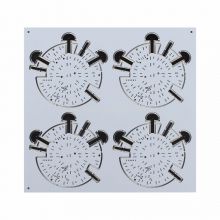A double-sided PCB has copper layers on both sides, unlike a single-sided board with only one. This allows more complex circuits, as components and traces can be placed on both surfaces. Vias (plated holes) connect the two sides, improving wiring flexibility and component density.
These PCBs are widely used in electronics, such as communication devices and computers, due to their higher circuit capacity. The manufacturing process includes extra steps like copper plating to ensure reliable connections between both sides.
Double-sided boards are cost-effective for mid-complexity designs, offering better performance than single-sided PCBs while avoiding the higher cost of multilayer boards. Their versatility makes them essential in modern electronics.





















